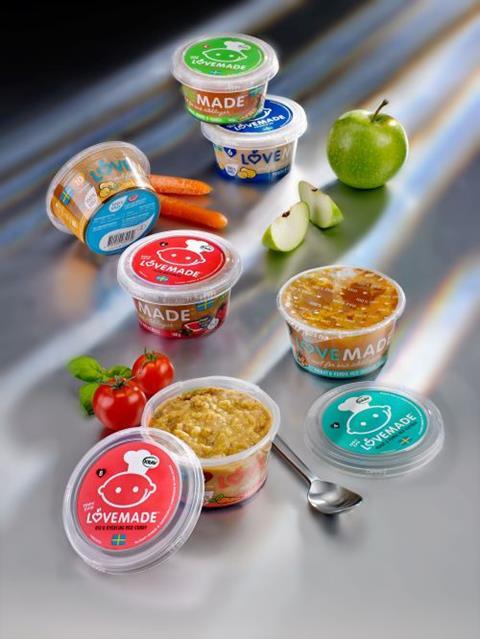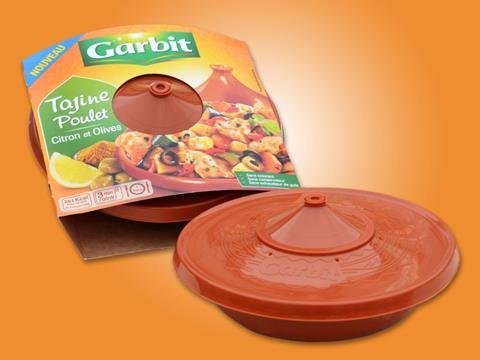
David Rourke, RPC Corby, talks to Packaging Europe about the balance between convenience, preserving food and minimising waste.
Our modern lifestyle creates many different dilemmas. When it comes to eating, today’s time-pressed and busy consumers are increasingly seeking the convenience of pre-prepared foods – either complete meals or ready-to-use ingredients to speed up the cooking process.
Certainly the British love affair with the ready meal shows no sign of abating. According to Key Note’s Ready Meals 2015 report, the ready meals market continued to expand in 2014, seeing its value rise by 5%. And the demand for convenience is not restricted to the UK – a recent Future Market Insights study has reported that the global convenience foods market is expected to grow at a healthly CAGR in the period from 2014-2020 with some emerging markets potentially experiencing a double-digit growth rate during this period.
Yet at the same time, campaigns such as Love Food, Hate Waste are highlighting the problem of food waste, and its cost and environmental impact.

Packaging is one way in which we can reconcile the demand for convenience and the need to preserve food and minimise waste. The advent of barrier plastic technologies in recent years has enabled many different products to enjoy extended shelf lives – up to 24 months and in some cases even beyond this – while maintaining their freshness, quality and taste.
Indeed, there is an interesting comparison between the UK and rest of Europe in how convenience foods are marketed. In the UK, the preference is still for fresh chilled – and therefore shorter shelf life – variants, whereas in mainland Europe meals are predominantly ambient, shelf-stable products with much longer sell-by dates. In the future, the need to minimise waste may see more focus on ambient long-shelf-life foods in the UK as well.
The problem with ambient foods in the past was a perceived reduction in quality compared to chilled varieties but thanks to the introduction of advanced barrier technologies for plastic packaging, this is now less of an issue. Barrier solutions typically incorporate EVOH to prevent oxygen ingress, and other barriers such as light inhibitors are also available.
Barrier technologies can be allied to different plastic manufacturing techniques – blow moulding, injection moulding and thermoforming – so that packaging manufacturers can tailor a solution to precise product and brand requirements.

This is important because convenience food packaging is not just about extended shelf life. There are many other consumer demands that need to be taken into account - functionality and easy handling, microwave-ability, easy opening and closing, ‘eating on the go’ and safe handling in a busy kitchen environment are all examples of what consumers are looking for in their quest for convenience.
Whether the focus is on the need for reclosability, intricate eye-catching designs, individual packs for effective portion control or a large family-size pack, plastic has the flexibility – in both materials and processes – to meet any or all of these requirements.
At RPC, for example, customer requirements have included a thermoformed pack to resemble a traditional French cooking pot; a microwavable container for a snack pasta dish; and large-size containers with indented handles for easy and safe handling in the busy foodservice sector.
Equally important in competitive markets, plastics design flexibility can create distinctive pack shapes to help create brand differentiation. In-mould labelling that combines barrier technology with the availability of high-quality decoration is another solution for ensuring maximum on-shelf impact.
Certainly barrier technology has opened up huge opportunities across the convenience food sector. Ready-to-eat snacks, dips and appetisers are another area where multilayer plastics have provided effective, eye-catching pack solutions. Barrier plastics have also played a critical role in the success of coffee capsules. A recent new market is the introduction of pre-prepared stocks and spices that can be easily added to a meal for a home-cooked taste with less preparation time. Baby foods and toddler ready meals are another growth sector.
Two solutions for Heinz’s famous Baked Beans demonstrate the flexibility of barrier plastics to meet different market requirements. A 1kg blow moulded jar is being used for the Fridge Pack, which combines extended shelf life and a large size sharing pack with portion control - once opened the jar can be resealed and stored in the fridge for up to five days. Meanwhile, thermoforming produces the popular Snap Pots, which provide convenient microwavable individual portions.
Plastics’ creativity and flexibility, along with the long shelf life credentials of its barrier technologies, will therefore continue to play a key role in the continuing growth of convenience foods and ready meals.
More info:



















